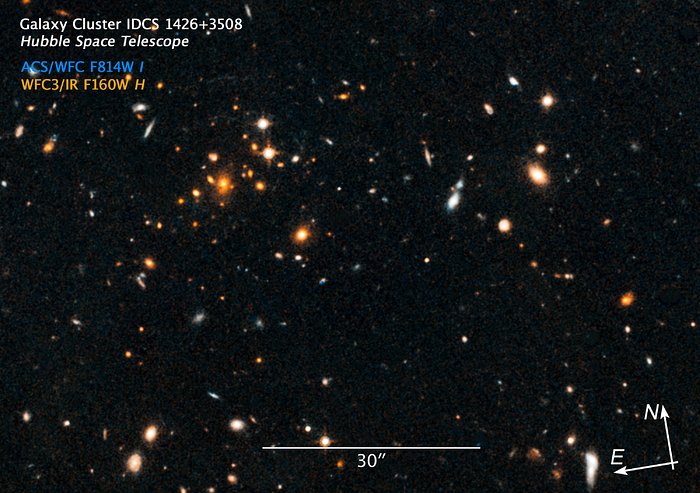Compass and scale image of IDCS J1426.5+3508
The galaxy cluster IDCS J1426.5+3508 is more than 10 billion light years away and the most massive galaxy cluster ever discovered at this distance. The total mass of the cluster is as much as 500 tillion times the Sun and it is 10 times larger than other clusters found in a similar epoch of the early universe.
The cluster is so heavy that it is functioning as a gigantic gravitational lense: A faint elongated, blue arc can be seen in the upper left oft the image. It is the light of en even more distant galaxy which is only visible because of the IDCS J1426.5+3508 cluster in front of it.
Credit:NASA, ESA/Huuble, and A. Gonzalez (University of Florida, Gainesville, USA), A. Stanford (University of California, Davis and Lawrence Livermore National Laboratory, USA) and M. Brodwin (University of Missouri-Kansas City and Harvard-Smithsonian Center for Astrophysics, USA). Illustration Credit: NASA, ESA, and Z. Levay (STScI, USA).
About the Image
About the Object
| Name: | IDCS J1426.5+3508 |
|---|---|
| Type: | Early Universe : Galaxy : Grouping : Cluster |
| Category: | Cosmology |
Wallpapers
Colours & filters
| Band | Wavelength | Telescope |
|---|---|---|
| Optical I | 814 nm |
Hubble Space Telescope
ACS |
| Infrared H | 1.6 μm |
Hubble Space Telescope
WFC3 |
